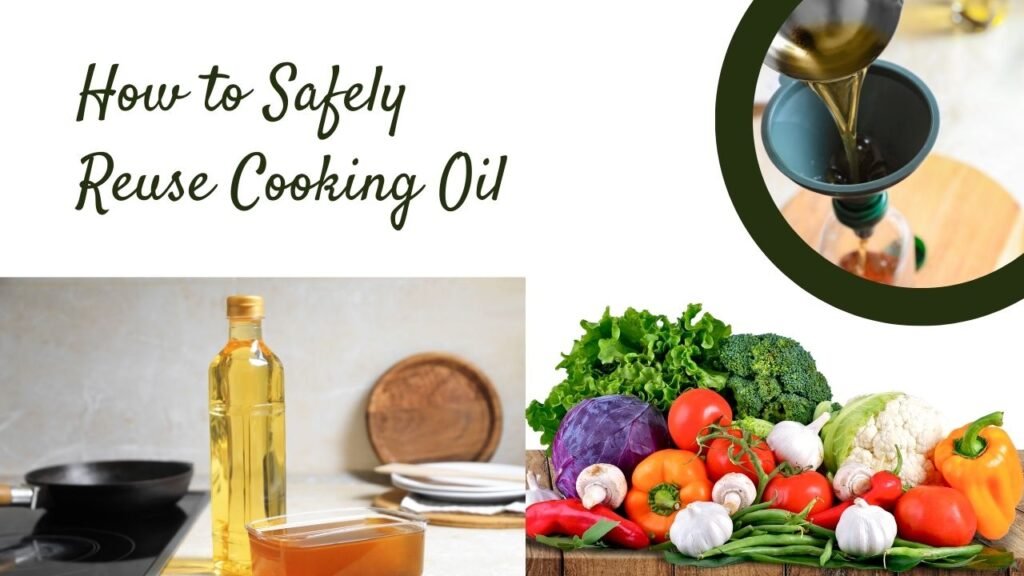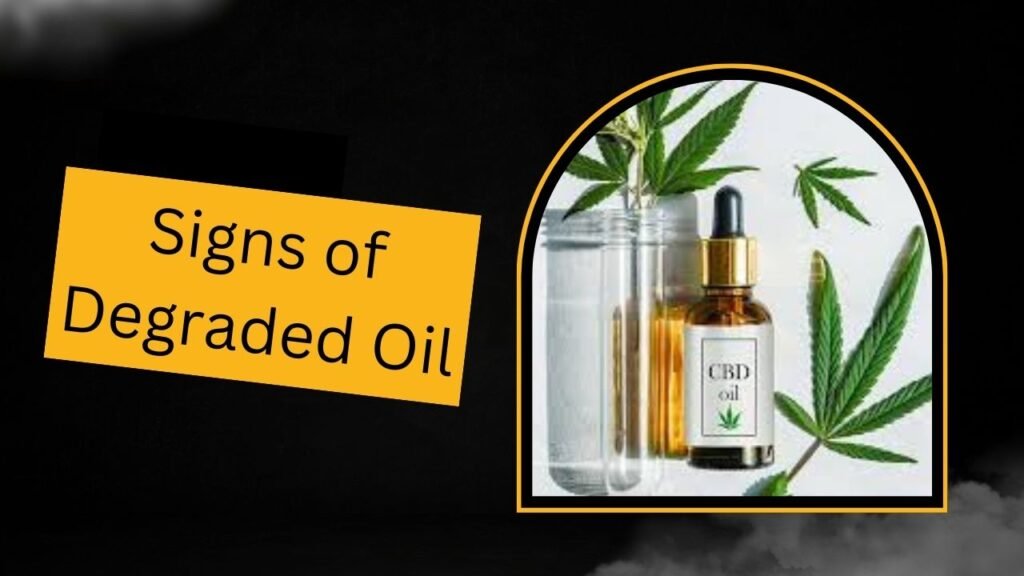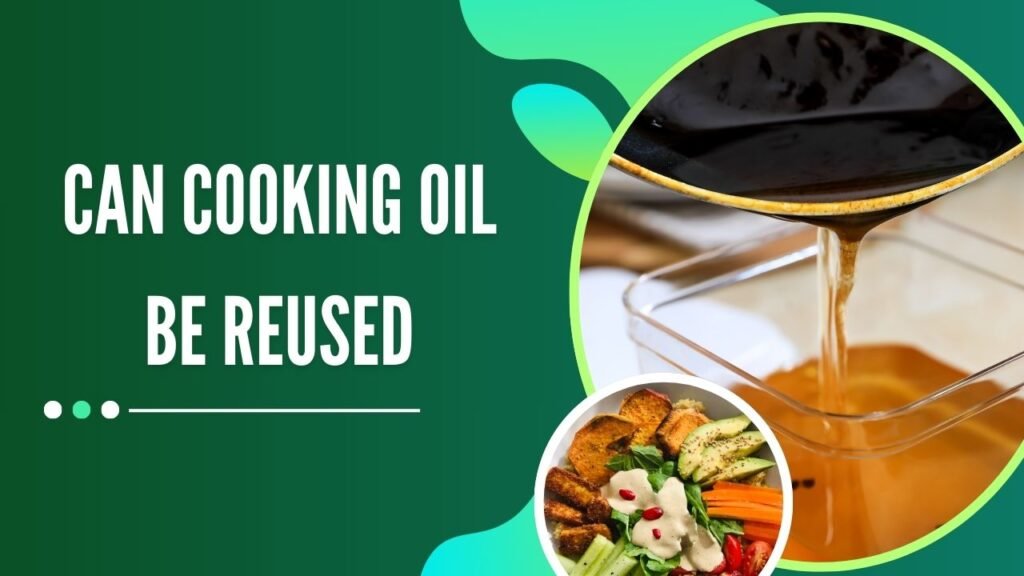Ever finished cooking a delightful batch of fries or a crispy batch of chicken and wondered, can cooking oil be reused? It’s a question that balances between practicality and health consciousness. Reusing cooking oil can save you money and reduce waste, but it’s essential to understand how to do it safely to maintain the quality of your food and protect your health. Let’s dive into the ins and outs of reusing cooking oil, exploring the benefits, risks, best practices, and everything in between.
Why Consider Reusing Cooking Oil?
The Benefits of Reusing Cooking Oil
Reusing cooking oil offers several advantages, both economically and environmentally:
- Cost Savings: Reusing oil reduces the need to purchase new oil frequently, stretching your culinary budget further.
- Environmental Impact: Minimizing oil disposal lowers your carbon footprint and reduces waste, contributing to a greener planet.
- Resource Efficiency: Maximizing the use of resources aligns with sustainable living practices, ensuring less oil ends up in landfills.
The Drawbacks and Risks
While there are benefits, reusing cooking oil also comes with potential downsides:
- Health Risks: Repeated heating can degrade oil, leading to the formation of harmful compounds like free radicals and trans fats.
- Flavor Degradation: Used oil can impart off-flavors to your dishes, affecting the overall taste and quality of your meals.
- Smoke Point Reduction: Each reuse lowers the oil’s smoke point, increasing the risk of burning and producing toxic fumes.
Understanding When and How to Reuse Cooking Oil
Factors to Consider Before Reusing Oil
Before deciding to reuse cooking oil, consider the following factors to ensure safety and quality:
- Type of Oil: Different oils have varying levels of stability and smoke points. For instance, peanut and canola oils are more suitable for reuse due to their high smoke points.
- Cooking Method: Deep frying is more likely to degrade oil quickly compared to sautéing or stir-frying.
- Temperature Control: Maintaining consistent cooking temperatures helps preserve oil quality and extends its usability.
- Filtration: Removing food particles and debris from the oil can prevent the breakdown of oil molecules and reduce the risk of rancidity.
- Storage Conditions: Properly storing used oil in a cool, dark place in an airtight container prolongs its lifespan and maintains its quality.
Table: Best Practices for Reusing Cooking Oil
| Factor | Best Practice |
|---|---|
| Type of Oil | Reuse oils with high smoke points like canola, peanut, and sunflower oils. |
| Cooking Method | Prefer deep frying over sautéing for better oil reuse efficiency. |
| Temperature Control | Use a thermometer to maintain consistent cooking temperatures. |
| Filtration | Strain oil through a fine mesh or cheesecloth to remove food particles. |
| Storage Conditions | Store in a cool, dark place in a clean, airtight container to prevent spoilage. |

How to Safely Reuse Cooking Oil
Step-by-Step Guide to Reusing Cooking Oil
- Cool the Oil: Allow the oil to cool to room temperature after cooking.
- Strain the Oil: Use a fine mesh sieve or cheesecloth to filter out food particles. This prevents the oil from degrading further and maintains its clarity.
- Store Properly: Transfer the strained oil into a clean, airtight container. Glass jars or metal containers are ideal as they prevent light from degrading the oil.
- Label with Date: Mark the container with the date of reuse to keep track of its usability.
- Limit Reuse Cycles: Generally, oil can be reused 2-3 times depending on the type and how it was used. Monitor for signs of degradation.
Tips for Maximizing the Lifespan of Reused Oil
- Avoid Mixing Oils: Stick to one type of oil for reuse to maintain consistent quality and flavor.
- Control Heat: Prevent overheating by maintaining appropriate cooking temperatures to avoid breaking down the oil.
- Quick Cooling: Cool the oil quickly to reduce the time it spends at high temperatures, minimizing degradation.
Table: Reusability of Different Cooking Oils
| Cooking Oil | Number of Reuses | Best Uses for Reuse |
|---|---|---|
| Canola Oil | 3-4 times | Frying, baking, sautéing |
| Peanut Oil | 3-4 times | Deep frying, stir-frying |
| Sunflower Oil | 2-3 times | Frying, roasting |
| Olive Oil | 1-2 times | Light sautéing, low-heat cooking |
| Coconut Oil | 2-3 times | Baking, light frying |
| Sesame Oil | 1 time | Stir-frying, Asian cuisine |
Health Considerations When Reusing Cooking Oil
The Science Behind Oil Degradation
When cooking oil is heated repeatedly, its molecular structure changes, leading to the formation of:
- Free Radicals: Highly reactive molecules that can cause cell damage and contribute to chronic diseases.
- Trans Fats: Unsaturated fats that have been hydrogenated, increasing the risk of heart disease.
- Aldehydes and Ketones: Compounds that can have harmful health effects when consumed in large quantities.

Signs of Degraded Oil
Knowing when oil has gone bad is crucial to maintaining health and the quality of your food:
- Off Smell: Rancid oil has a sharp, unpleasant odor.
- Darkened Color: Fresh oil is typically light in color; darkening indicates degradation.
- Viscosity Changes: Thick or sticky oil suggests it has broken down.
- Formation of Foam: Excessive bubbling can indicate oxidation and free radical formation.
Health Implications of Using Degraded Oil
Using degraded oil can lead to:
- Increased Cholesterol Levels: Trans fats and other harmful compounds can negatively impact cholesterol levels.
- Digestive Issues: Consuming oxidized oils may cause stomach discomfort and other digestive problems.
- Long-Term Health Risks: Chronic exposure to free radicals and trans fats is linked to heart disease, inflammation, and other serious health conditions.
Environmental Impact of Reusing Cooking Oil
Reducing Waste and Environmental Footprint
Reusing cooking oil contributes to environmental sustainability by:
- Minimizing Waste: Less oil disposal reduces landfill waste.
- Conserving Resources: Maximizing the use of each oil bottle extends the lifecycle of the product, conserving natural resources.
- Lowering Carbon Emissions: Producing less new oil decreases the energy and resources required, thereby reducing carbon emissions.
Proper Disposal of Used Cooking Oil
If reusing oil isn’t an option, proper disposal is essential to minimize environmental impact:
- Recycle Where Possible: Some recycling centers accept used cooking oil for conversion into biodiesel.
- Solidify for Disposal: Mix oil with absorbent materials like kitty litter or sand and dispose of it in the trash.
- Avoid Pouring Down the Drain: Cooking oil can clog pipes and harm wastewater treatment systems.
Innovative Ways to Reuse Cooking Oil
Beyond Cooking: Creative Reuse Ideas
Reusing cooking oil doesn’t always mean frying the same foods again. Here are some innovative ways to repurpose used oil:
- DIY Soap Making: Used cooking oil can be a key ingredient in homemade soap.
- Lubrication: Use it to lubricate squeaky hinges or stuck drawers.
- Composting: Small amounts of used oil can be added to compost piles to enrich the soil.
- Arts and Crafts: Incorporate oil into craft projects like oil-based paints or stains.
Recycling Programs and Initiatives
Some communities offer recycling programs specifically for used cooking oil, turning it into biodiesel or other useful products. Participating in these programs can further reduce your environmental impact.
Best Practices for Reusing Cooking Oil
Step-by-Step Guide
- Cool the Oil: Allow the oil to cool completely before handling.
- Filter the Oil: Strain out food particles using a fine mesh sieve or cheesecloth.
- Store Properly: Transfer the filtered oil to a clean, airtight container, preferably glass or stainless steel.
- Label and Date: Mark the container with the date of reuse to track its usability.
- Limit Reuse: Follow recommended reuse limits based on the type of oil and cooking method.
Tips for Safe Reuse
- Use Clean Utensils: Avoid introducing contaminants by using clean utensils when handling oil.
- Monitor Oil Quality: Regularly check the oil for signs of degradation and discard if necessary.
- Avoid Mixing Oils: Stick to one type of oil per cooking session to maintain consistent quality.
Table: Safe Practices for Reusing Cooking Oil
| Practice | Description | Benefits |
|---|---|---|
| Cooling Properly | Let the oil cool to room temperature before handling | Prevents burns and reduces oil degradation |
| Straining | Remove food particles using a sieve or cheesecloth | Extends oil lifespan and maintains clarity |
| Airtight Storage | Use clean, airtight containers to store used oil | Preserves oil quality and prevents spoilage |
| Labeling | Date each reuse to track oil’s usability | Helps manage oil lifecycle and reuse limits |
| Limiting Reuse | Follow recommended reuse cycles based on oil type and use | Ensures safety and maintains food quality |
Personal Reflections: My Cooking Oil Reuse Journey
I remember the first time I started reusing cooking oil. Initially, it was a money-saving experiment driven by curiosity. Can cooking oil be reused? I thought, why not? The first few uses were seamless—I noticed no change in flavor or quality. However, as I continued, I began to detect a slight bitterness in my dishes. This prompted me to research and understand the signs of oil degradation. Now, I carefully filter and store my oil, adhering to reuse limits. Reusing cooking oil has not only saved me money but also made me more mindful of my cooking practices and their environmental impact. It’s a small change that brings substantial benefits!
FAQs About Can Cooking Oil Be Reused
1. How many times can I reuse cooking oil safely?
Generally, you can reuse cooking oil 2-3 times, depending on the type of oil and how it was used. Oils with higher smoke points like canola and peanut oil tend to hold up better for multiple uses.
2. What is the best way to filter used cooking oil?
The best way to filter used cooking oil is by using a fine mesh sieve or cheesecloth to remove any food particles. This helps prevent the oil from breaking down further and maintains its clarity and quality.
3. How should I store reused cooking oil?
Store reused cooking oil in a clean, airtight container, preferably glass or stainless steel. Keep it in a cool, dark place or refrigerate it to prolong its shelf life and prevent oxidation.
4. Can I reuse cooking oil for different types of food?
While you can reuse cooking oil for different types of food, be mindful that strong flavors from previous uses may transfer to new dishes. It’s best to reuse oil for similar types of cooking to maintain flavor integrity.
5. What are the signs that cooking oil should no longer be reused?
Signs that cooking oil should no longer be reused include an off smell, darkened color, increased viscosity, and the presence of foam or bubbles. If you notice any of these signs, it’s best to discard the oil.
Table: Signs of Degraded Cooking Oil and Actions to Take
| Sign | What It Indicates | Action |
|---|---|---|
| Off Smell | Rancidity or oxidation | Discard the oil |
| Darkened Color | Degradation of oil molecules | Discard the oil |
| Increased Viscosity | Breakdown of oil structure | Discard the oil |
| Formation of Foam | Oxidation and free radical formation | Discard the oil |
| Unusual Taste | Off-flavors from degradation | Discard the oil |
Environmental and Ethical Considerations
Reducing Waste through Reuse
Reusing cooking oil not only saves you money but also significantly reduces waste. By extending the life of each oil bottle, you contribute to less landfill waste and a smaller environmental footprint.
Ethical Disposal Practices
When reusing oil isn’t feasible, disposing of it responsibly is crucial. Avoid pouring oil down the drain as it can clog pipes and harm the environment. Instead, participate in local recycling programs or follow proper disposal methods to ensure minimal environmental impact.
Table: Proper Disposal Methods for Used Cooking Oil
| Method | Description | Benefits |
|---|---|---|
| Recycling Programs | Take oil to designated recycling centers for conversion | Reduces landfill waste, supports sustainability |
| Solidification | Mix oil with absorbent materials like kitty litter and dispose | Prevents clogging pipes, easy to handle |
| Composting | Add small amounts to compost piles to enrich soil | Returns nutrients to the earth |
| DIY Projects | Use oil for homemade soaps or lubricants | Repurposes oil creatively, reduces waste |
Innovative Solutions and Future of Cooking Oil Reuse
Advances in Recycling Technology
Recycling technology is continually evolving to handle used cooking oil more efficiently. Innovations such as chemical recycling and bio-refining are transforming used oil into valuable products like biodiesel, lubricants, and even new cooking oils.
Sustainable Packaging Trends
The future of cooking oil packaging lies in sustainability. Brands are adopting eco-friendly practices such as:
- Recycled Materials: Using recycled plastics and glass for oil bottles.
- Refill Stations: Offering refill options to reduce single-use packaging.
- Biodegradable Packaging: Developing packaging materials that decompose naturally, minimizing environmental impact.
Table: Sustainable Packaging Innovations for Cooking Oils
| Innovation | Description | Benefits |
|---|---|---|
| Recycled Materials | Using recycled plastics and glass | Reduces demand for new raw materials, lowers waste |
| Refill Stations | Providing refill options at stores | Minimizes single-use packaging, encourages reuse |
| Biodegradable Packaging | Developing packaging that decomposes naturally | Lowers environmental impact, promotes sustainability |
| Eco-Friendly Labels | Using labels made from recycled or sustainable materials | Enhances overall eco-friendliness of products |
Personal Reflections: My Experience with Reusing Cooking Oil
Switching to reusing cooking oil was a pivotal change in my cooking habits. Initially, I was skeptical about whether it would affect the taste of my dishes or pose any health risks. However, after following proper filtration and storage methods, I noticed no negative impact on flavor. Instead, I felt good knowing I was reducing waste and saving money. It took a bit of experimentation to get the hang of managing oil reuse, but the benefits far outweighed the initial challenges. Understanding can cooking oil be reused empowered me to make more sustainable and economical choices in the kitchen, aligning my cooking practices with my environmental values.
FAQs About Can Cooking Oil Be Reused
1. Can all types of cooking oil be reused?
Yes, but not all oils are equally suitable for reuse. Oils with higher smoke points like canola, peanut, and sunflower oil are better suited for multiple reuses, whereas oils with lower smoke points like extra virgin olive oil are best limited to one or two uses.
2. How do I know if my cooking oil is still good to reuse?
Check for signs of degradation such as an off smell, darkened color, increased viscosity, or the formation of foam. If you notice any of these signs, it’s best to discard the oil.
3. Can I reuse cooking oil for different types of food?
While you can reuse cooking oil for different foods, be mindful that strong flavors from previous uses may transfer to new dishes. It’s best to reuse oil for similar types of cooking to maintain flavor integrity.
4. Is it safe to refrigerate used cooking oil?
Yes, refrigerating used cooking oil can help prolong its shelf life by slowing down the oxidation process. Make sure the oil is stored in an airtight container to prevent it from absorbing other odors.
5. How should I dispose of cooking oil if I can’t reuse it?
Proper disposal methods include recycling it at designated centers, solidifying it with absorbent materials like kitty litter, composting small amounts, or repurposing it for DIY projects. Avoid pouring oil down the drain to prevent plumbing issues and environmental harm.
Table: Types of Cooking Oils and Their Reusability
| Cooking Oil | Smoke Point (°F) | Number of Reuses | Best Uses for Reuse |
|---|---|---|---|
| Canola Oil | 400-450 | 3-4 times | Frying, baking, sautéing |
| Peanut Oil | 450 | 3-4 times | Deep frying, stir-frying |
| Sunflower Oil | 440 | 2-3 times | Frying, roasting |
| Olive Oil | 375-420 (extra virgin) | 1-2 times | Light sautéing, low-heat cooking |
| Coconut Oil | 350-385 | 2-3 times | Baking, light frying |
| Sesame Oil | 350-410 | 1 time | Stir-frying, Asian cuisine |
| Avocado Oil | 520 | 3-4 times | High-heat cooking, grilling |
| Grapeseed Oil | 420 | 3-4 times | Sautéing, grilling, dressings |
| Rice Bran Oil | 450 | 3-4 times | Deep-frying, baking, general cooking |
| Safflower Oil | 450 | 2-3 times | High-heat cooking, salads |
Final Thoughts
When pondering can cooking oil be reused, the answer is a resounding yes, provided you follow the right practices to ensure safety and quality. Reusing cooking oil not only benefits your wallet but also contributes to a more sustainable environment by reducing waste. However, it’s crucial to monitor the oil’s condition, adhere to reuse guidelines based on the type of oil, and store it properly to maintain its integrity.
Embracing the art of reusing cooking oil requires a bit of knowledge and mindfulness, but the rewards are well worth the effort. From saving money and conserving resources to fostering healthier cooking habits, the benefits extend beyond your kitchen. So, next time you’re ready to cook up a storm, consider the lifecycle of your oil and make informed choices that align with both your culinary and environmental goals. Happy cooking!


